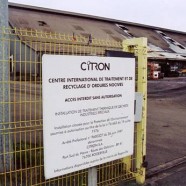
Association pour la protection de l'Homme et de l'environnement
- Contact
- L’echoppe
- Donation
- Membership
- Robin des Bois


- ANIMALS
- Marines Pollutions
- SHIP DEMOLITION
- INDUSTRIAL RISKS



Join
Direct access to pictures
Direct access to videos
Robin des Bois was founded in France in 1985 by pioneers of environmental protection. The NGO’s orientation is decided on by a board elected by the member’s General Assembly and carried out by 8 full-time staff members with multidisciplinary skills. Robin des Bois’ objective is the protection of Man and the Environment by means of all forms of research and non-violent action. Words are our only weapon. On ground investigations, bibliographic synthesis, publishing reports, press releases, letters to authorities, regular participation to a dozen institutional consulting groups and international conventions: we are at work with our grey matter, solid boots and a good dose of flair. We put forward technical, historical, geographical, sometimes philosophical arguments, with a strong will to remain concrete and constructive.
Robin des Bois is supported by a national and international network of supporters and professionals in areas such as the maritime community, anti-environmental criminality, risk management, waste and polluted sites. The NGO is not affiliated to any political party. Our campaigns require perseverance and are to be carried out over the long term. Robin des Bois also takes legal action and part took in the success of the historical law suit concerning the Erika oil spill, and such without the help of a lawyer. The NGO is in France accredited for the protection of the environment.
® ROBIN DES BOIS | | Mentions Légales









